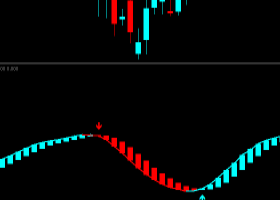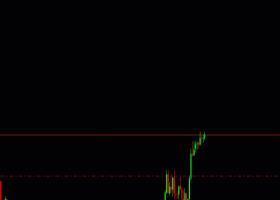Daily Forex Fundamental Overview
Fundamental Analysis
EUR
"Economic recovery in the euro area continues to be dampened by subdued growth prospects and a sluggish pace of implementation of structural reforms Additional stimulus is expected from the monetary policy measures still to be implemented and will contribute to further rebalancing the risk to the outlook for growth".
- Mario Draghi, ECB President
The European Central Bank revealed no surprises regarding interest rate decision as all three main interest rates left on hold, in line with majority of economists' expectations. The central bank's main interest rate, remains at a record low of 0%, while the deposit rate, in turn, will stay at minus 0.4%, indicating that commercial banks continue to pay to park funds with the central bank overnight. The market posted minimal reaction to the following news and was mostly concentrated on President Draghi's press conference. During the ECB President press conference it was revealed that there is willingness to take further action if inflation doesn't pick up decisively, however the need for patience is necessary as previously announced stimulus measures take effect. Also, it was stressed out that Central bank would start its corporate bond purchase programme on June 8 and would conduct its first operation in its new series of targeted loans on June 22.
Meanwhile, despite a recent increase in oil prices, the ECB's economists revealed positive inflation forecast for this year, as well as left their projections for next year and 2018 unchanged, an indication that further stimulus measures may be needed if policy makers are to meet their inflation target of just under 2%.
USD
"Job growth continues to be substantially faster than the underlying growth of the labor force, so the labor market continues to tighten".
- Jerome Powell, Fed governor
According to the latest Labour Department release, the number of Americans applying for unemployment benefits unexpectedly dropped last week to a five week low, pointing to a tightening jobs market. The data for the previous week showed that 267,000 individuals filed new jobless claims. The following data revealed a decline of 1,000 claims from the prior week's level of 268,000. Moreover, the streak of initial jobless claims below 300k resumes a 64 consecutive weeks' period, thus showing the longest since 1973. Moreover, the data was better than the consensus estimate of 270k new claims. Continuing jobless claims, in turn, for the week ended May 21 went up to 2.172 million from 2.160 million in the preceding week. Moreover, the previous week's figure was revised down from 2.163 million. Economists had expected continuing claims to decline further reaching the 2.150 million mark. Overall, a Labour Department analyst revealed that there were no special factors which have led to the following last week's claims data. However, claims for Tennessee, Virginia, Wyoming, Puerto Rico and Hawaii were estimated because of the Memorial Day holiday. Also it could be added, that last week's claims report has no impact on the employment report for May, which is scheduled to be published today.
GBP
"Heightened uncertainty and subdued general economic conditions in turn contributed to the first outright fall in new work received by construction firms for just over three years".
- David Morrison, SpreadCo
UK construction sector activity in May unexpectedly fell with output growth easing to its weakest for almost three years with new orders contracting for the first time in three years. In a report, market research firm Markit and the Chartered Institute of Purchasing & Supply stated that UK construction PMI index was weaker than expected at 51.2 from 52.0 the previous month and compared with expectations of 51.9 for the month. Construction makes up 6% of Britain's economy, though it accounts for a disproportionate amount of volatility in official gross domestic product data. In addition, the new orders component fell especially sharply, dropping to 48.1 from 50.1, its first time since April 2013 below the 50-mark that separates growth from contraction and the lowest index reading since March 2013.
Uncertainty surrounding the June referendum was again cited as a key factor in restraining activity with over 30% of companies stating that there was a significant negative impact. Civil engineering the worst performing category for the second month running with the residential and commercial sectors also recording activity close to three-year lows. More positively, the employment index remained in positive territory and jobs increased at the fastest pace since January. There was a further deterioration in supplier performance, which continues to suggest capacity constraints, while input prices continued to increase.
AUD
"Overall, these data provide some tentative reasons to believe that GDP growth in the second quarter is unlikely to be anywhere near as good as the 1.1 per cent quarterly rise in the first".
- Paul Dales, Capital Economics
Australian retail sales rose modestly in April, led by strength in cafes, department stores and clothing. In a report, Australian Bureau of Statistics stated that Australian retail sales rose to a seasonally adjusted 0.2%, as soft consumer demand, a warm autumn and aggressive discounting took their toll after a relatively strong March. The growth rate compares with a 0.4% increase for March, and fell short of economists' forecasts of 0.3% this time. The Australian Bureau of Statistics reported that turnover at cafes, restaurants and takeaway stores led the way with a 1% increase, followed by clothing, footwear and accessories, with 0.5% growth. However the situation with food retailers, such as supermarkets, appeared to be bad, as sales in this segment were down 0.3% for the month.
Meanwhile, a separate research showed that Australia's trade balance rose more-than-expected last month. Australia's trade balance increased to a seasonally adjusted -$1.579 billion, against market expectations of a -$2.11 billion print. That is a fall of $392 million, 20%, from the March deficit of -$1.971 billion whose figure was revised up from -$2.163 billion. Moreover, data showed that exports have risen by 1% and imports have declined by 1%. This is good news that backs up the strong GDP data released yesterday, but yet is a trend that needs to pick up pace if it is to counteract the loss of the mining industry all together.



